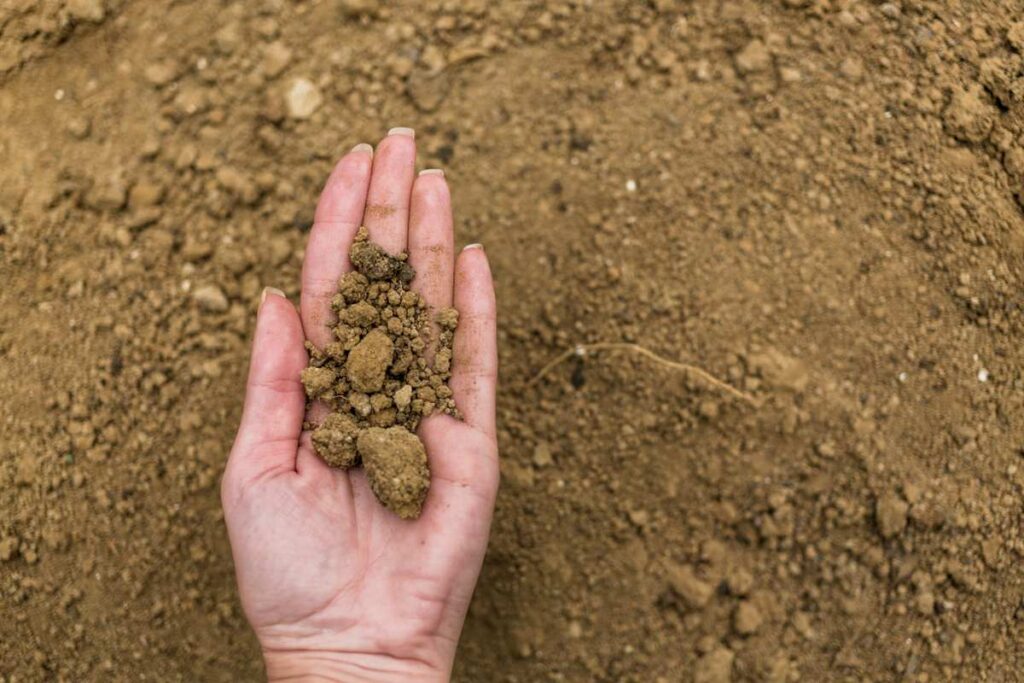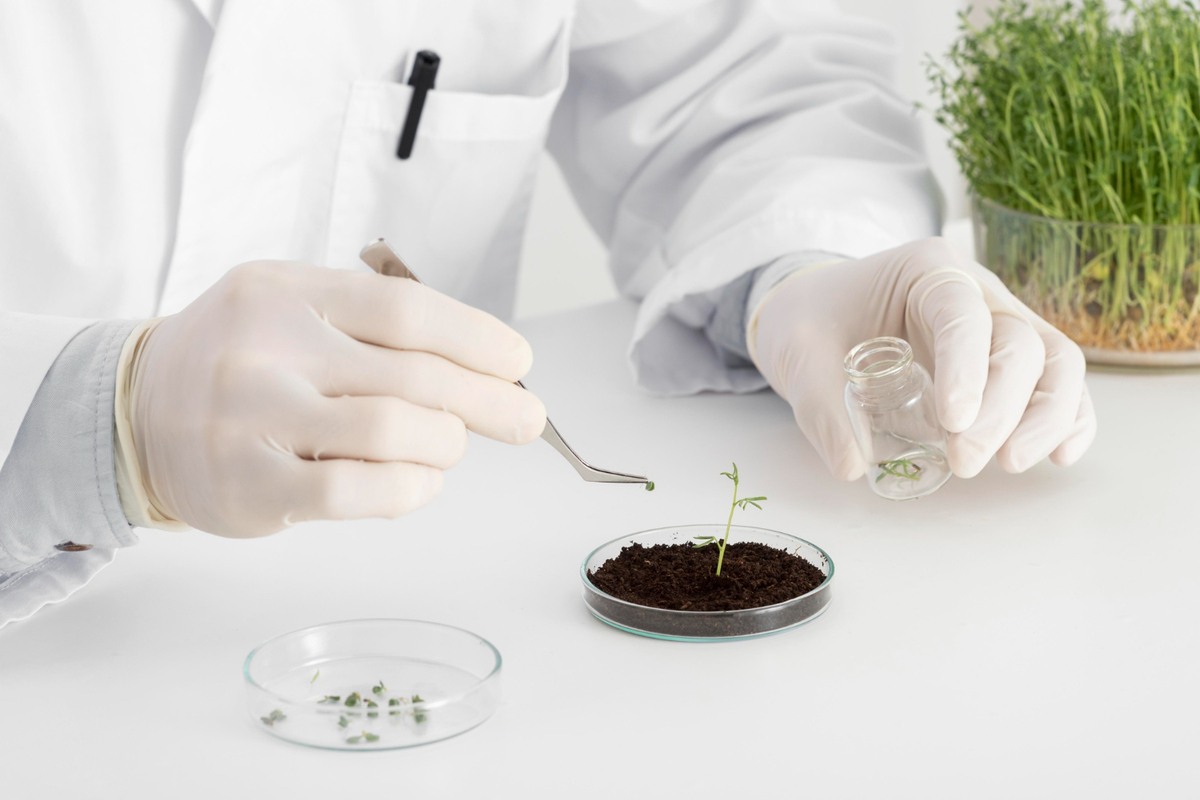Soil pH is a critical factor in agriculture as it directly influences the availability of nutrients to plants, microbial activity in the soil, and overall soil health. The pH level of the soil, which measures its acidity or alkalinity, is a vital parameter that affects plant growth, crop yield, and the sustainability of agricultural practices.
Soil pH is a measure of the concentration of hydrogen ions (H+) in the soil, expressed on a scale from 0 to 14. A pH of 7 is considered neutral, values below 7 are acidic, and values above 7 are alkaline. The pH scale is logarithmic, meaning that each unit change represents a tenfold difference in acidity or alkalinity. For example, soil with a pH of 6 is ten times more acidic than soil with a pH of 7. In this article, we will discuss the importance of soil pH in agriculture in detail.
Table of Contents
Different Soil pH Ranges
| Level of acidity or alkalinity | Soil pH ranges |
| Extremely acidic | pH below 4.5 |
| Very strongly acidic | pH between 4.5 and 5.0 |
| Strongly acidic | pH between 5.0 and 5.5 |
| Moderately acidic | pH between 5.5 and 6.5 |
| Slightly acidic | pH between 6.5 and 7.0 |
| Neutral | pH of 7.0 |
| Slightly alkaline | pH between 7.0 and 7.5 |
| Moderately alkaline: | pH between 7.5 and 8.5 |
| Strongly alkaline | pH between 8.5 and 9.0 |
| Very strongly alkaline | pH above 9.0 |
Importance of Soil pH in Agriculture

1. Nutrient Availability
Soil pH directly influences the availability of essential nutrients to plants. Certain nutrients are more accessible at specific pH levels, and maintaining the right pH ensures that plants can absorb the nutrients they need for healthy growth.
2. Microbial Activity
Soil pH affects the activity and population of soil microorganisms, which are crucial for processes like nitrogen fixation, organic matter decomposition, and nutrient cycling. A balanced pH promotes a thriving microbial community that supports soil fertility.
3. Crop Selection
Different crops have specific pH preferences. Understanding and managing soil pH allows farmers to choose appropriate crops that will thrive in the existing soil conditions, maximizing yield and crop quality.
4. Toxicity Prevention
Extreme soil pH levels can lead to the solubilization of toxic elements, such as aluminum in acidic soils or sodium in alkaline soils. Managing soil pH helps prevent toxicity issues that can harm plant roots and inhibit growth.
5. Soil Structure
Soil pH can influence soil structure by affecting the stability of soil aggregates. Proper pH management contributes to better soil structure, improving water retention, aeration, and root penetration, which are essential for plant health.
6. Pest and Disease Resistance
The right pH balance can enhance a plant’s resistance to pests and diseases. An optimal pH supports strong plant growth and reduces susceptibility to soil-borne pathogens.
7. Fertilizer Efficiency
The effectiveness of fertilizers is closely linked to soil pH. In soils with an imbalanced pH, fertilizers may not be as effective, leading to wasted resources and lower crop productivity. Maintaining the correct pH ensures that fertilizers work efficiently.
8. Long-term Soil Health
Regular monitoring and adjustment of soil pH contribute to long-term soil health and sustainability. Proper pH management helps maintain soil fertility, reduces erosion, and supports sustainable agricultural practices over time.
How to Test Soil pH Level

Measuring soil pH is a straightforward process that can be done using a few different methods. The most common method is using a soil pH test kit or pH meter. To measure soil pH, start by collecting a soil sample from the area you want to test, ensuring it’s representative of the whole area by mixing soil from several spots. Place the soil in a clean container, remove any debris, and add distilled water to create a soil slurry. If using a pH meter, insert the electrode into the slurry and wait for the reading to stabilize. If using a test kit, add the provided solution to the soil sample, shake well, and compare the color change to a pH scale provided in the kit. This will give you an accurate measurement of the soil’s pH, helping you determine if any adjustments are needed for optimal plant growth.
Also one can do it by sending the soil samples to a soil testing laboratory for analysis. Laboratory testing of soil pH is a precise method that involves sending soil samples to a professional lab where they are analyzed using standardized procedures.
Acidic Soil
Acidic soil is characterized by a low pH, typically below 7, and occurs when the soil environment is dominated by hydrogen ions. Acidic soils are common in regions with high rainfall, where leaching removes basic nutrients like calcium and magnesium, leaving behind more acidic components. This type of soil can pose challenges for plant growth, as it affects nutrient availability, microbial activity, and overall soil health.
Management of Acidic soil
- Use lime (calcium carbonate) to neutralize soil acidity, increase pH, and improve nutrient availability, with application rates determined by soil testing.
- Add compost, manure, or green manure crops to improve soil structure, enhance microbial activity, and buffer pH fluctuations.
- Grow crops that naturally thrive in acidic conditions, such as blueberries and potatoes, or use crop rotation to manage soil pH over time.
Alkaline Soil
Alkaline soil is characterized by a high pH, typically above 7, and occurs when the soil environment contains a surplus of basic (alkaline) ions such as calcium, magnesium, potassium, and sodium. These soils are often found in arid and semi-arid regions where low rainfall limits the leaching of basic ions from the soil. Alkaline soils can present challenges for plant growth due to nutrient imbalances and potential toxicity issues.
Management of Alkaline Soil
- Incorporate elemental sulfur, ammonium sulfate, or other acidifying agents into the soil to gradually lower the pH, making it more suitable for plant growth.
- Use compost, manure, or peat moss to increase soil organic matter, which helps improve soil structure, enhance microbial activity, and buffer pH levels.
- Apply gypsum (calcium sulfate) to improve soil structure and displace sodium in sodic soils, which are often associated with high alkalinity, without significantly altering pH.
- Grow plants that naturally thrive in alkaline conditions, such as certain grasses, legumes, and ornamental plants, to reduce the impact of high soil pH.
- If possible, use irrigation water with a slightly acidic pH to help gradually lower soil alkalinity over time, or mix in acidifying fertilizers to the irrigation water.
Conclusion
Soil pH is a fundamental factor in agriculture, influencing nutrient availability, microbial activity, soil structure, and overall crop health. Understanding and managing soil pH is essential for optimizing plant growth, maximizing yields, and maintaining soil fertility. Through careful monitoring and appropriate amendments, farmers can create a balanced soil environment that supports sustainable and productive agricultural practices.







